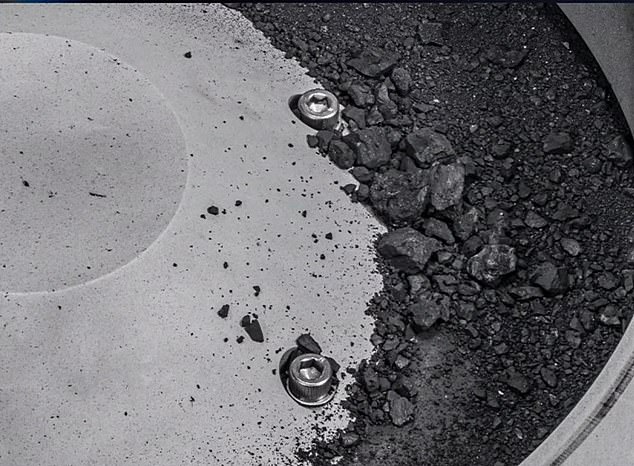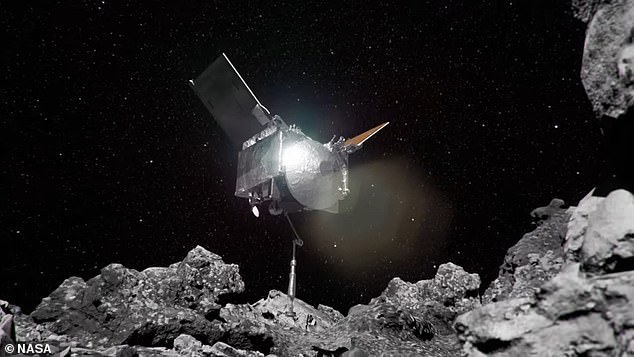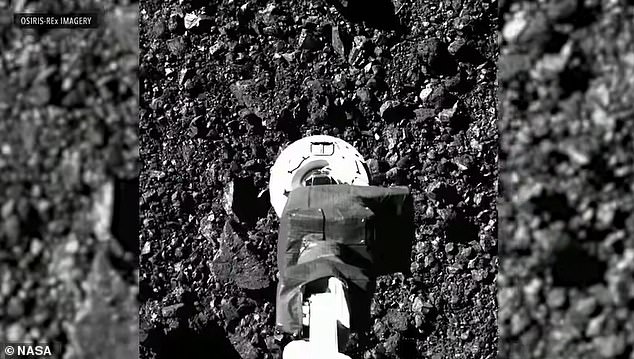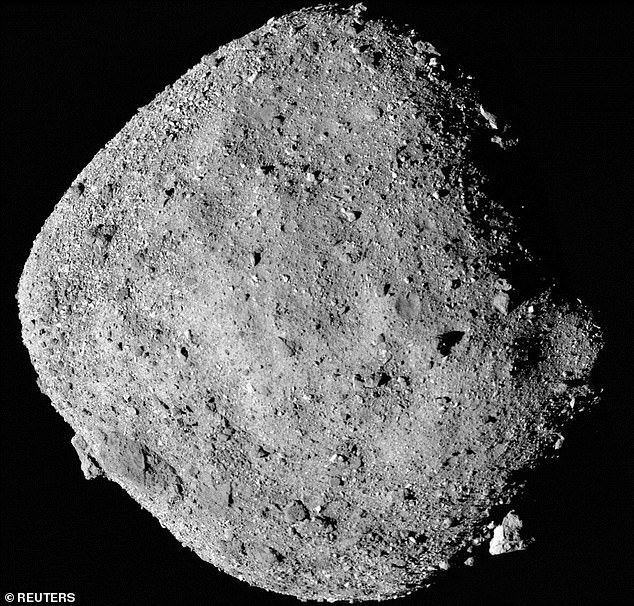NASA’s first asteroid samples came from ‘ancient ocean world’: Scientists discover fragments of Bennu contain lots of carbon and water – and the planet may have been suitable for life
The first asteroid sample returned to Earth may have come from an ancient oceanic world, which may have had suitable conditions for life.
The first analysis, carried out in October, found that Bennu contained large amounts of water and carbon – and scientists suggested such asteroids may have provided the building blocks for life on Earth.
Now, researchers from the University of Arizona believes Bennu was part of a watery planet that existed billions of years ago.
The team found that some of the dark rocks on the asteroid are covered by a thin crust of brighter material, as observed on Saturn’s moon Enceladus, which is thought to have a global ocean of liquid salt water.
Researchers from the University of Arizona believe Bennu was part of a water-rich planet that existed billions of years ago.

The team found that some of the dark rocks on the asteroid are covered by a thin crust of brighter material, as observed on Saturn’s moon Enceladus, which is believed to have a global ocean of liquid salt water.
“My working hypothesis is that this was an ancient ocean world,” said Dante Lauretta of the University of Arizona and the mission’s principal investigator. NewScientist.
He added that the asteroid sample contains structures that could provide clues to the origins of life.
Lauretta has not yet published his hypothesis or findings, but said his analysis of the material in recent months showed that much of the rock is clay, including minerals called serpentites.
These materials form on Earth when rock is pushed into the seabed and exposed to water, causing an exothermic reaction that generates heat.
The team also noticed that brighter material covered Bennu’s dark rock, and Lauretta said it is an extremely rare calcium- and magnesium-rich phosphate mineral.
Because the same material is found on Enceladus, scientists have theorized that life may have begun on the icy seafloor.
Fabian Klenner of the University of Washington in Seattle told NewScientist: “There are indeed similarities between the mineralogy of Bennu and what was found on Enceladus.”
The researchers don’t claiming that the findings showed that life existed on the planet, but that “the origin of life is a major area of investigation for these samples.”

The OSIRIS-REx mission deployed in 2016 and landed in Salt Lake City, Utah in September 2023. The researchers do not claim that the findings showed that life existed on this planet, but that “the origin of life is a major area of research for these people.” monsters’

The OSIRIS-REx mission collected samples from the Bennu asteroid, which is located about 120 km from Earth

The space agency sent a probe to the 1,000-foot asteroid Bennu in 2020 as part of a historic sample-collecting mission
NASA’s OSIRIS-REx mission delivered samples from the asteroid Bennu in 2023 after it launched to the space rock in 2016.
The space agency sent a probe to the 1,000-foot asteroid Bennu in 2020 as part of a historic sample-collecting mission.
The mission brought back about 350 grams of debris, which NASA says contains building blocks from the beginning of our solar system and could provide clues to understanding how life formed on Earth.
NASA chose to sample Bennu because it is believed to be rich in organic compounds.
Bennu is a remnant of the formation of the solar system, and NASA believes the mission can provide insight into Earth’s history, as weather, erosion and plate tectonics have wiped out all evidence of Earth’s formation.
“We’re going back to the beginning of the solar system, we’re looking for clues as to why Earth is a habitable world, this rare jewel in space with oceans and a protective atmosphere,” Lauretta said after receiving samples from the OSIRIS-REx mission in September.
“The biggest question is the origin of life, and we believe we’re bringing back that kind of material, perhaps the seeds of life that these asteroids delivered in the beginning.”
